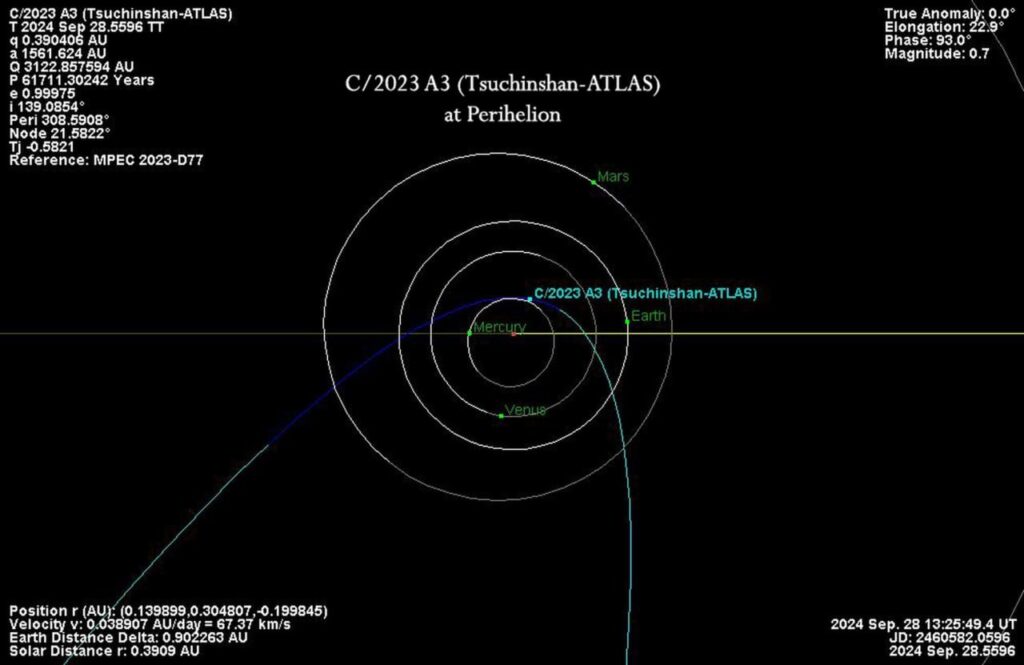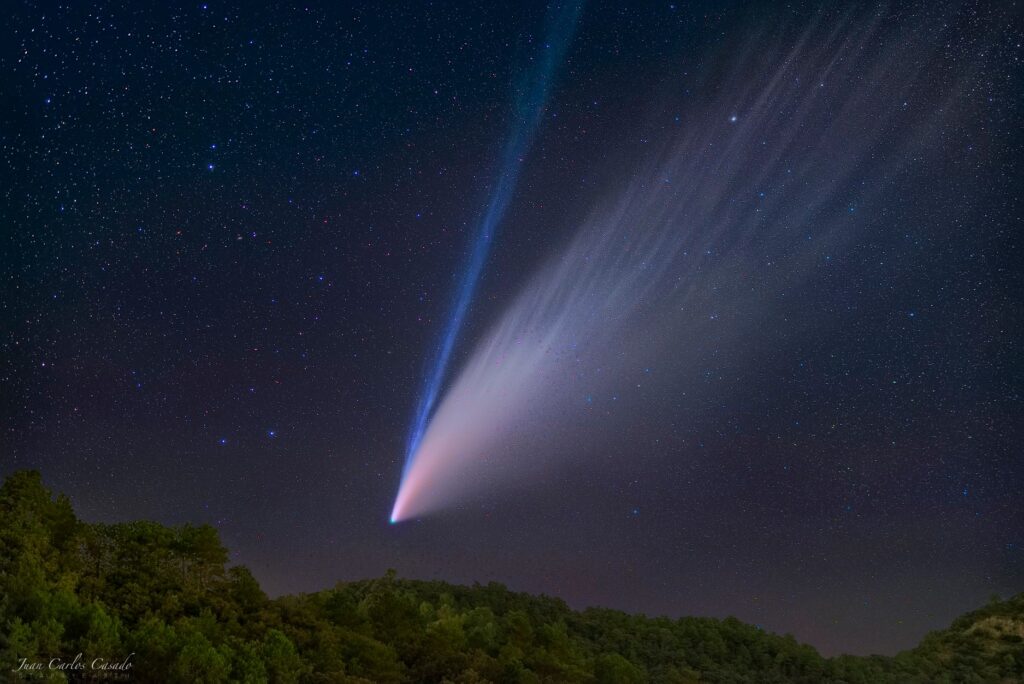The Minor Planet Center (MPC) has given an official name to the comet, which is already being called the main comet of 2024. It received the designation C/2023 A3 (Tsuchinshan-ATLAS).

C/2023 A3 was first discovered in images taken on January 9 by the Chinese observatory Tsuchinshan (translated as Purple Mountain). On February 22, the ATLAS automated telescope located in South Africa took independent images of the object. The analysis carried out by astronomers showed that it was a comet. C/2023 A3 has a small tail and a very compact coma.
At the moment, C/2023 A3 is located at a distance of 7.3 AU (1090 million km) from the Sun, which exceeds the distance to Jupiter. But it is rapidly approaching the perihelion of its orbit, which will be passed on September 28, 2024. On this day, the comet will fly at a distance of 0.39 AU (58 million km) from the Sun.
Despite the fact that there is still a year and a half left before the visit of C/2023 A3, many astronomers are already saying that it can give earthlings a beautiful celestial show. This forecast is based on the following facts. Firstly, C/2023 A3 is a long-period comet. It arrived from the far reaches of the Solar System. The last time it visited the vicinity of the Sun about 30 thousand years ago. This means that the comet must contain large reserves of intact volatiles.
Secondly, all available data suggests that C/2023 A3 is a large object. Of course, the exact diameter of its core is still unknown. But the apparent magnitude of C/2023 A3 indicates that it is quite large. Thirdly, many long-period comets tend to collapse during the perihelion passage. However, C/2023 A3 will pass at a relatively safe distance from the Sun and has a good chance of surviving the approach.

According to the current MPC forecast, the maximum brightness of C/2023 A3 in the terrestrial sky will be 0 stellar magnitude. This means that it will be six times brighter than the famous comet NEOWISE, observed in the summer of 2020, and a hundred times brighter than the recent comet ZTF. According to preliminary calculations, the best conditions for observing the comet will be in the Northern Hemisphere in the period from October 12 to October 20, 2024. At the same time, there are also more optimistic brightness forecasts, according to which the apparent magnitude of C/2022 E3 will be -1, which is comparable to the brightness of Sirius.
Of course, so far we are talking only about preliminary estimates. In the history of astronomy, there are many cases when the brightness of a comet exceeded the wildest expectations, and when their visit ended in disappointment. But in any case, it is obvious that in the near future C/2023 A3 will be in the spotlight and we will often hear its mention in the news.
Follow us on Twitter to get the most interesting space news in time
https://twitter.com/ust_magazine
